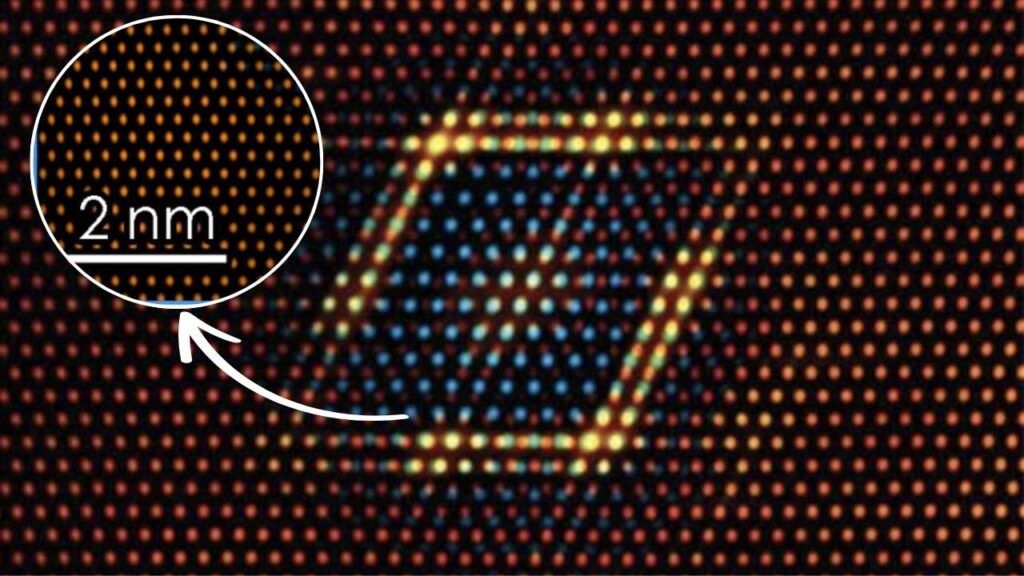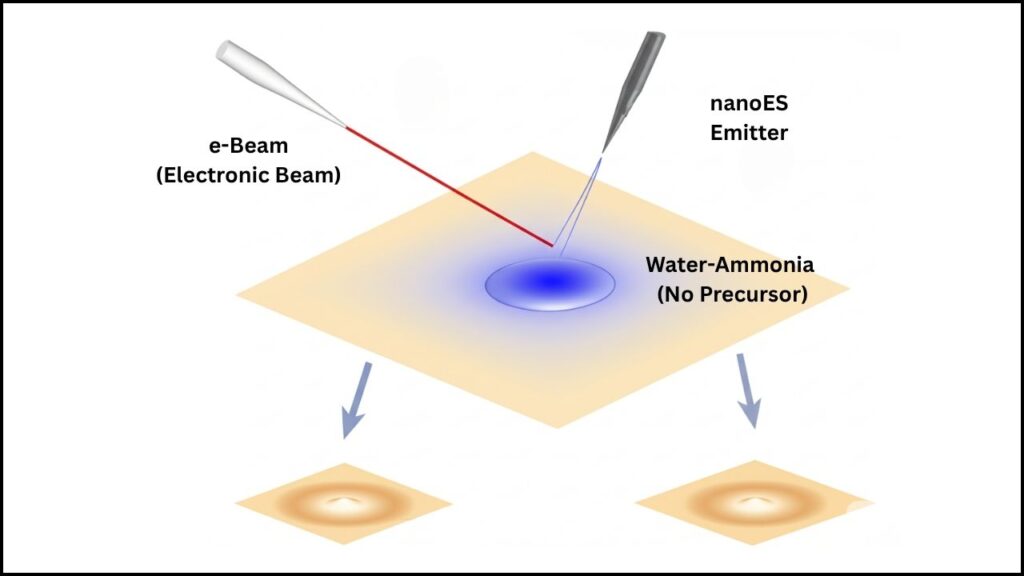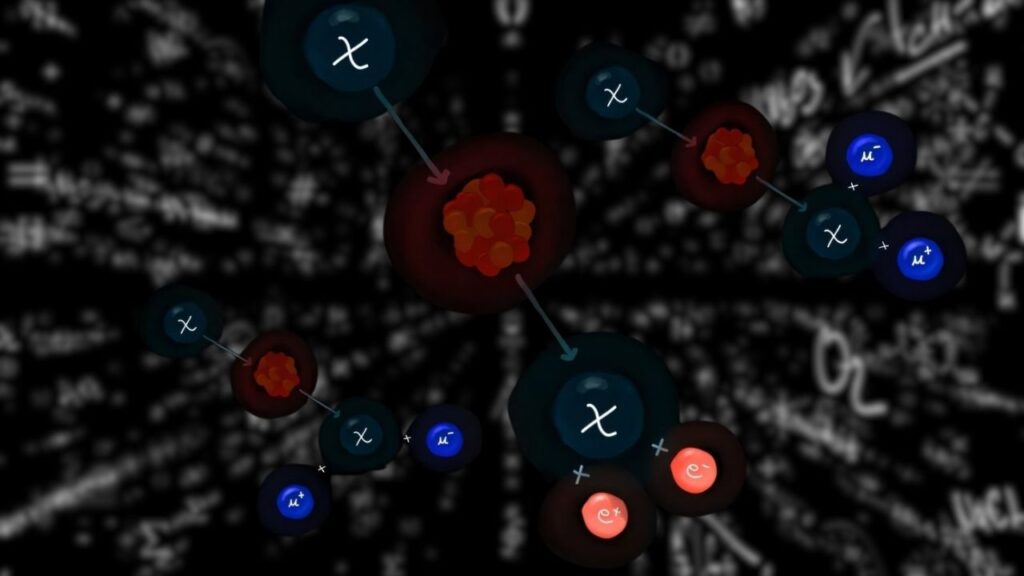Scientists have discovered a previously unknown light phenomenon in gypsum, a mineral familiar to most people due to its use in drywall, classroom chalk, and construction. This isn’t just a quick lab curiosity—it’s a genuine breakthrough that could change how we design next-generation computers, sensors, and optical devices. Here’s everything you need to know about this discovery, why it matters, and what it might mean for the future.
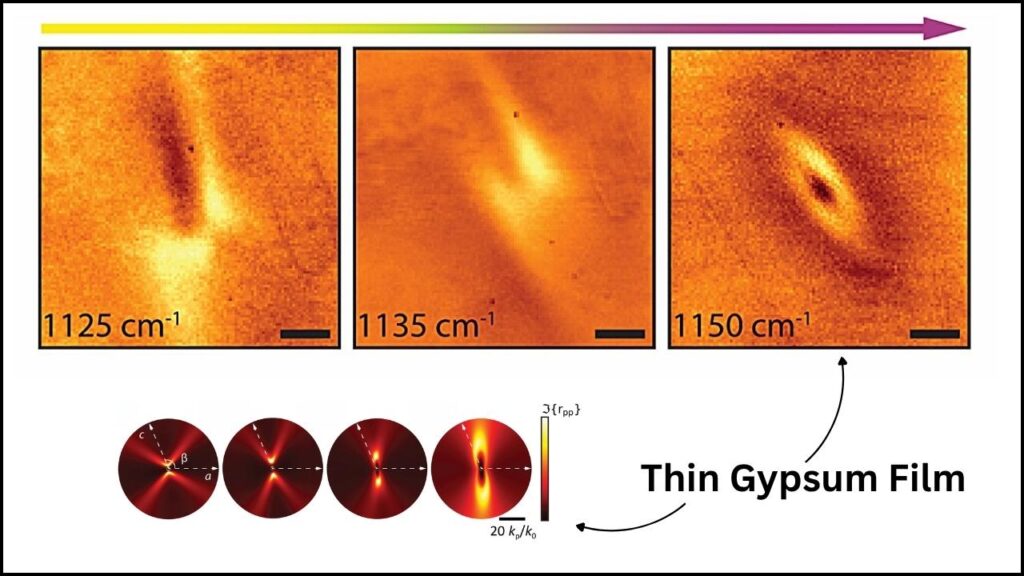
Table of Contents
What Happened?
A research team from the University of Manchester and the University of Oviedo found that when gypsum—the white, chalky material you see every day—is sliced into ultrathin films, light can travel through it in ways never before observed in such a common substance. Inside these gypsum layers, light and atomic vibrations combine to form hybrid waves called shear phonon polaritons. These waves are special because they can squeeze light into incredibly tiny spaces and move it around in patterns that ordinary light can’t follow.
What’s most surprising is that gypsum isn’t a rare or exotic crystal—it’s dirt-cheap, easy to find, and simple to process. Yet, until now, only expensive, hard-to-make crystals could demonstrate these exotic light behaviors.
New Light Phenomenon Found in Common Gypsum
| Topic | Discovery Details | Why It’s Important |
|---|---|---|
| Shear Phonon Polaritons | First observation in ultrathin gypsum films; waves combine light and atomic vibrations | Opens door for new, super-compact optical and electronic devices |
| Topological Transition | Light waves shift from hyperbolic to elliptical paths, passing through a unique canalized state | Scientists can now “tune” how light travels, enabling new types of nanoscale devices |
| Field Confinement | Light squeezed into very small volumes; stronger than previously possible | Potential for much smaller, more powerful chips and sensors |
| Slow Group Velocity | Light’s speed inside gypsum slowed to 0.0005 times its speed in vacuum | May enable “slow light” applications for better sensing and control |
| Gypsum’s Advantages | Common, easy to get, and simple to process compared to exotic crystals | Makes advanced photonics more affordable and practical for real-world use |
The discovery of shear phonon polaritons in gypsum is a shining example of how science always has new stories to tell—even about materials we’ve known for centuries. Gypsum, once considered just a building block, now stands at the cutting edge of optical physics. For professionals, this opens a new field of research and practical possibilities; for everyone else, it’s a clear reminder that curiosity and careful observation can lead to breakthroughs in the most unexpected places.
This isn’t just a technical update—it’s a real-world lesson in the power of curiosity, collaboration, and basic research. While far more work is needed to turn this science into everyday technology, the potential is vast, and the implications could stretch across medicine, computing, communication, and beyond.
Section 1: What Are Shear Phonon Polaritons?
To understand shear phonon polaritons, think of a rubber ball bouncing in a crowded room. When the ball (light) hits a person (an atom), it doesn’t just bounce—it might pick up some of that person’s movement, creating a kind of “hybrid” bounce. Phonon polaritons are these hybrid waves: they happen when light gets tangled up with atomic vibrations in a crystal. Unlike ordinary light, which zips through in straight lines, these hybrid waves can twist, turn, and squeeze into spaces a thousand times smaller than a human hair.
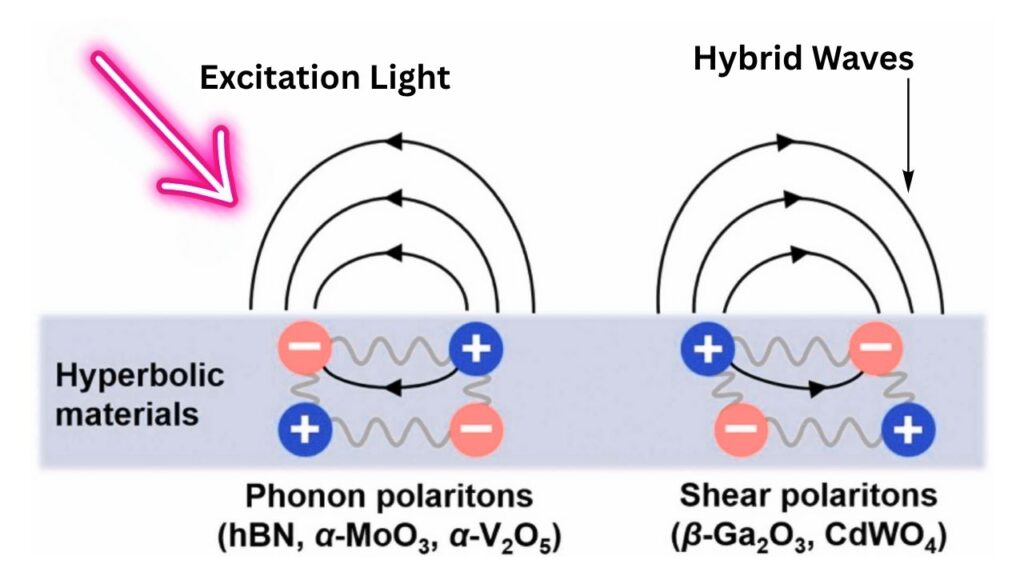
Until now, scientists mainly saw these hybrid waves in big, expensive, laboratory-made crystals. But gypsum—cheap, simple, everywhere—has just joined this exclusive club.
How Do They Work in Gypsum?
Gypsum is what we call a monoclinic crystal, meaning its atoms are arranged in a slightly “tilted” pattern. This tilt gives gypsum “shear” properties—a bit like shuffling a deck of cards, the layers can slide past each other. When scientists made gypsum films about a thousand times thinner than a sheet of paper, they found that the hybrid light-matter waves don’t just travel straight. Instead, they can change shape as they move, shifting from “hyperbolic” (saddle-shaped) paths to “elliptical” (oval) paths, sometimes pinched into a straight line (canalized). This “shape-shifting” is called a topological transition.
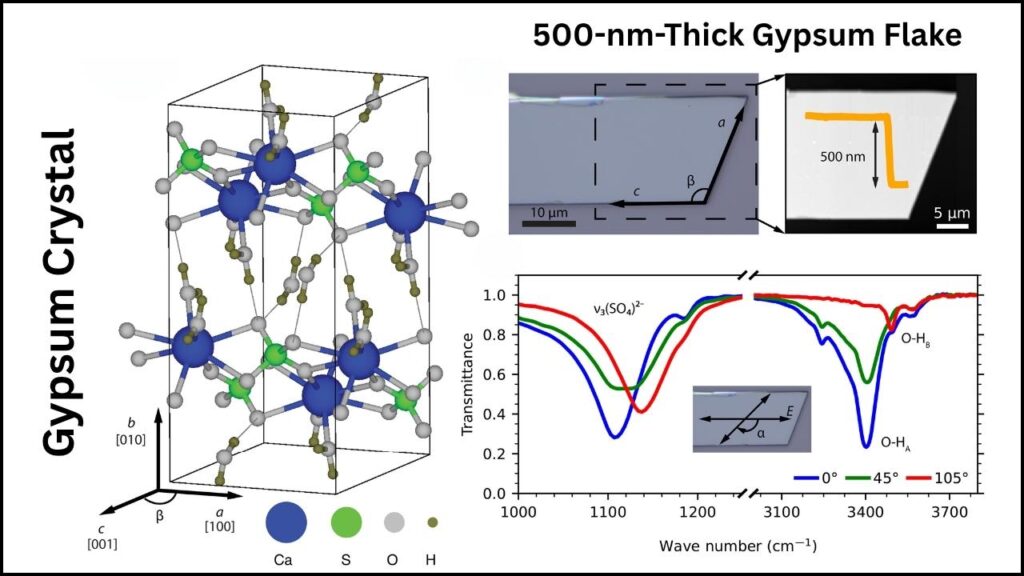
This transition isn’t just a technical curiosity—it means researchers can control exactly how light moves through the material. This is vital for designing devices that manipulate light with extreme precision, such as super-fast computers or ultra-sensitive chemical sensors.
Section 2: How Was the Discovery Made?
The research team used advanced imaging techniques that can “see” tiny details, much smaller than anything visible under an ordinary microscope. They made thin films of gypsum and shone infrared light on them. Using a technique called nano-FTIR spectroscopy, they observed how the light waves behaved inside the crystal.
What they saw surprised them: instead of spreading out evenly, the light waves formed ordered, sometimes twisted patterns—sometimes as stretched ovals, sometimes squeezed into narrow lines. These patterns matched what their mathematical models predicted, confirming the presence of shear phonon polaritons and the topological transition.
Real-World Example
Imagine you’re shining a flashlight into a cloud of dust. Normally, the light spreads out in a cone. But if the dust could shape the light, you might see the beam twist, flatten, or even squeeze into a thin, bright line. That, in a nutshell, is what’s happening inside these gypsum films—only on a scale so small you’d need special microscopes just to see it.
Section 3: Why Is This Important for Science and Technology?
For Scientists and Engineers
This discovery isn’t just a lab oddity—it’s a practical toolkit upgrade. Gypsum is easy to get, easy to work with, and cheap. If future technologies can use gypsum instead of rare, expensive crystals, the cost and complexity of advanced optical devices could drop dramatically.
Potential applications include:
- Ultra-fast, ultra-small computers: Light, instead of electricity, could be used to move information around, making devices faster and more energy efficient.
- Super-sensors: Devices that could detect chemicals, pollutants, or even diseases with incredible sensitivity, down to single molecules.
- Better imaging and communication: Gypsum-based chips might make cameras, microscopes, and fiber-optic systems much more powerful.
- Slow light applications: Gypsum can slow down light to a tiny fraction of its usual speed, which could be useful for storing or processing information in new ways.
For Students and the Public
This is a brilliant example of how science never stands still. Even with things as everyday as chalk and plaster, there’s always more to learn. Who knows what other “ordinary” materials might surprise us next?
Section 4: Gypsum vs. Other Materials
Until now, only non-van der Waals (non-vdW) crystals—hard-to-make, rare substances—were known to support these exotic polaritons. Gypsum, however, is a vdW crystal, meaning its layers can be easily peeled or stacked, much like graphene. This makes gypsum much more practical for building devices: you can stack layers, twist them, or arrange them in new ways, opening up a whole new playground for optical scientists.
Gypsum’s low symmetry is actually an advantage: it allows for more kinds of wave behavior, like the “shape-shifting” transition described earlier. In many ways, gypsum is now the most practical platform for studying and harnessing these new light waves.
Section 5: From Lab to Real-Life Step by Step
Here’s how this science could move into real-world technology:
- Obtain Gypsum: It’s common—found in building materials, chalk, and more.
- Prepare Thin Films: Using special lab techniques, slice gypsum into films far thinner than paper.
- Shine Light: Use infrared light to excite the hybrid waves.
- Observe and Control: Watch how light travels—shape it, steer it, squeeze it.
- Build Devices: Design chips, sensors, or circuits that use these controllable light patterns.
For teachers and students: You can demonstrate the science behind this discovery by showing how ordinary gypsum (chalk, plaster) can have hidden surprises. For engineers and scientists, this is a new research avenue—gypsum could be the key to new kinds of photonic chips and sensors.
High-Tc Superconductivity in La₃Ni₂O₇: Why This Discovery Is a Milestone in Materials Science
FAQs About New Light Phenomenon Found in Common Gypsum
Q1: What is gypsum?
Gypsum is a soft, white mineral made of calcium sulfate. It’s widely used in plaster, drywall, chalk, and even some foods.
Q2: What is a phonon polariton?
A phonon polariton is a combined wave of light and atomic vibrations in a crystal, which can travel in unusual patterns, including squeezing into very small spaces.
Q3: Why does this matter for technology?
Because gypsum is cheap and common, using it for advanced photonics could make new devices much more affordable and practical.
Q4: Can I see this effect at home?
No—this happens on a scale much smaller than visible light. But you can use gypsum (e.g., chalk) to explain how even everyday materials can hide scientific wonders.
Q5: What’s next in this research?
Scientists will now try to build actual devices with gypsum, such as optical chips or sensors, to see how well these new effects work in the real world.
